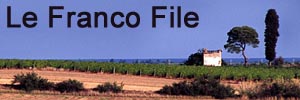 The last day of June and time to leave the Caravan Club site at Ludham Bridge in East Norfolk to head over to Sandringham estate in West Norfolk for the opposition’s (Camping and Caravanning Club) site. There was no rush; it’s about a 90-minute drive and we couldn’t check in before midday so we had a leisurely morning packing before wandering down to the River Ant one last time before bidding adieu.
The last day of June and time to leave the Caravan Club site at Ludham Bridge in East Norfolk to head over to Sandringham estate in West Norfolk for the opposition’s (Camping and Caravanning Club) site. There was no rush; it’s about a 90-minute drive and we couldn’t check in before midday so we had a leisurely morning packing before wandering down to the River Ant one last time before bidding adieu.
In some way, I’m looking forward to moving on. Though this area is extremely pleasant and the site very well situated from an interest viewpoint, it is appallingly situated from a Tesco Mobile signal point of view. Occasionally we see a glimmer of a bar which almost immediately disappears. Effectively, there is no signal. Technology is all very well but one tends to come to rely on it and when it lets you down it’s frustrating. I mean, here we sat for a week on the Norfolk Broads where countless rental pleasure craft float past, a mere 12 miles from Norwich, England’s most easterly city, and 13 miles from Great Yarmouth, one of our major seaside resorts, the Blackpool of the east, and we have no mobile phone signal. This is hardly the back of beyond for Darwin’s sake. How can we do this stuff so badly? It’s bloody incredible! Old fashioned phone boxes were more reliable, except when attacked by mindless vandals, of course.
Looking forward to there perhaps being a mobile phone signal on the Sandringham estate – I mean, surely HM would be on one of those bargain Tesco Mobile tariffs and they’d have to make sure she had a signal, wouldn’t they? – we bumped, bounced and jiggled Guillaume’s way across several poorly surfaced, relatively minor East Norfolk roads before joining the smoother and decidedly more comfortable A148 into West Norfolk and on to Sandringham.
After years of being steadfastly locked in to Caravan Club sites, we seem to be becoming fans of the opposition campsites. We used the opposition for the first time in Shropshire recently and were very quickly impressed. Both these clubs have campsites, almost on top of each other, within the Sandringham estate and we chose the CCC based upon good ol’ Google Earth views. It is attractively laid out amongst trees giving it a less crammed and less regimented feel. We settled in quickly, had a spot of lunch and went for an exploratory bike ride. We headed west towards the coast for some waterways but found no critters, surprisingly.
Did you spot that conundrum? We’re in Norfolk on the east coast of Britain but we headed west on our bikes to go towards the coast. Look at a map – work it out. 🙂
For the second time this year ❗ we have been blessed with a pleasantly warm and sunny evening. Steady, don’t get excited. In a fit of meteorological foresight, we had bought some very good sirloin steak to throw on the barbecue in case this very situation arose. However, with an equivalently alarming lack of foresight, we have contrived to arrive at Sandringham with only 1½ bottles of wine in Guillaume’s store cupboard. To every action, there is an equal but opposite reaction. Shame on us, poor show, we really should know better than this. Mercifully, a bottle of Soberano, purchased recently from the famous Roys of Wroxham, came to our rescue and alcohol levels could be maintained. Cold turkey avoided – phew!
Oh, and we’ve got a four bar mobile phone signal. How civilized is that after a week with none? HM can keep in touch with the family. 🙂





































Recent Comments